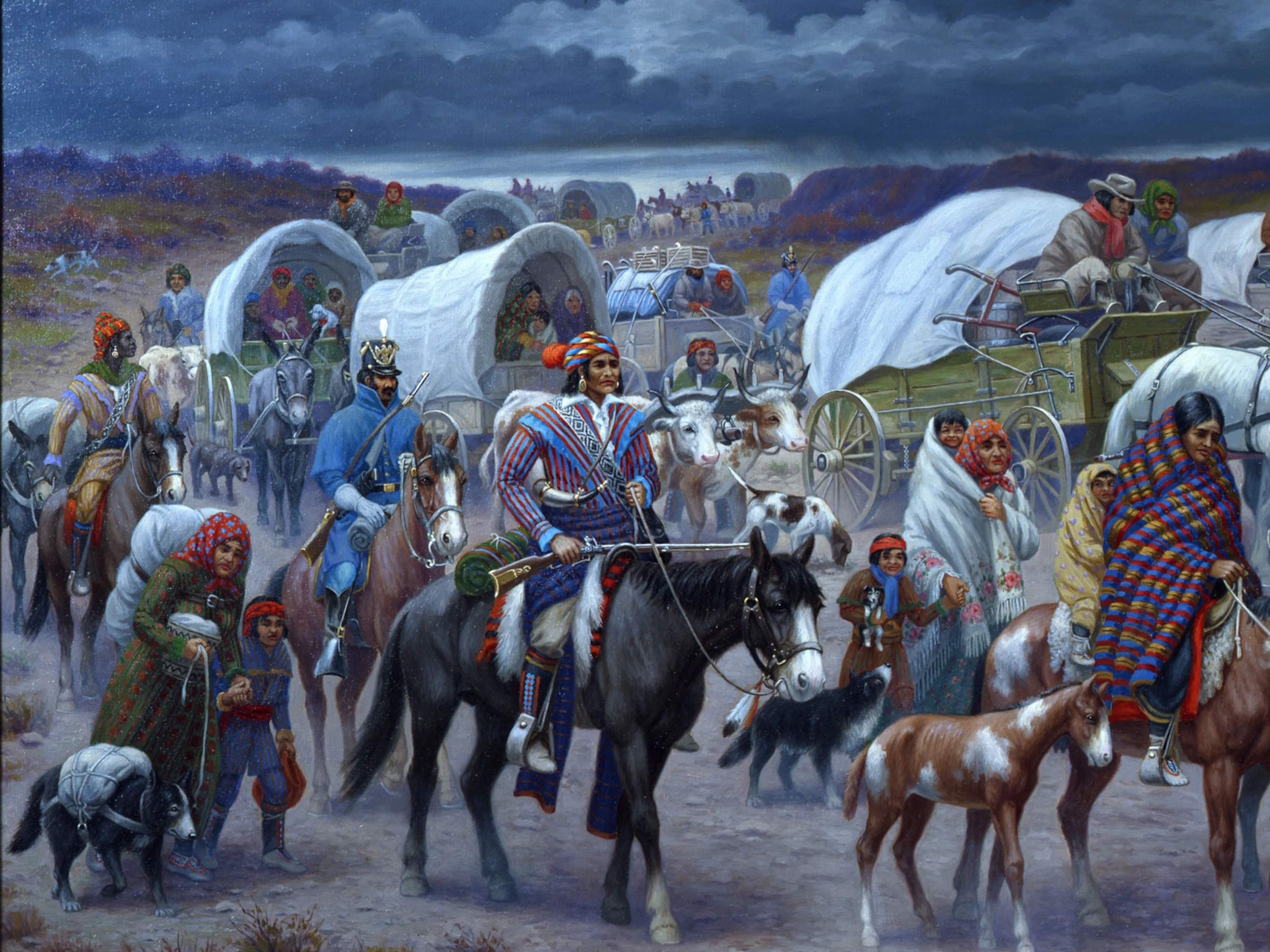Tribal leaders have renewed calls for a place in the U.S. House of Representatives, a unique provision of the landmark Treaty of New Echota. Here’s how it came to be.
Nearly 200 years ago, the United States signed a treaty with the Cherokee people, bartering away the tribe’s ancestral homelands for a far-off reservation and putting the forced migration now known as the Trail of Tears into motion.
Even though the 1835 Treaty of New Echota was just one of the 375 acknowledged agreements between the U.S. and Tribal governments, it contained a unique provision: a line that promised the Cherokee people a delegate to the House of Representatives.
Now, the Cherokee Nation is calling on the U.S. government to make good on that promise by seating the nation’s first-ever Cherokee delegate: Kim Teehee, the tribe’s director of government relations and a former Native policy advisor for President Barack Obama. (Subscriber exclusive: North America’s Native nations reassert their sovereignty: “We are here.”)
But is the controversial treaty still valid—and why did the Cherokee sign it in the first place? Here’s what you need to know.
EARLY SETTLERS CLAMOR FOR CHEROKEE LAND
When European settlers arrived in North America in the 16th century, they encountered Cherokee people who lived in what is now the southeastern portion of the U.S. In the late 17th century, white settlers began clamoring for access to Cherokee lands, which included vast hunting grounds and fertile farmland. Those calls only grew louder with the expansion of the newly formed U.S. in the late 18th and early 19th century.
Slowly, federal and state governments pushed to both demarcate and erode Native-held lands, promising financial assistance and peace in exchange for increasing swaths of land. The Cherokee resisted, even forming a centralized tribal government modeled on the young U.S. government and adopting a written constitution. (Learn more about the modern Cherokee quest to reclaim stolen territory.)
The Cherokees’ refusal to cede any more territory provoked outrage in Georgia, which had surrendered its own westernmost lands to the federal government in 1802 in exchange for a promise that all Native Americans would be removed from its new borders. In the 1820s, Georgia systematically stripped legal and land protections from the Cherokee. Then, in 1829, a Georgia newspaper reported that gold had been discovered in Cherokee territory. Would-be gold miners inundated the land, and in 1830 the state officially stopped recognizing Cherokees’ legal rights.
Meanwhile, the federal government’s intent to strip Native American tribes of their territories had only grown. In 1830, Congress passed the Indian Removal Act authorizing President Andrew Jackson to trade unsettled western lands in exchange for Native-held lands east of the Mississippi.
THE CHEROKEE NATION DECIDES TO NEGOTIATE
These events caused deep fissures within the Cherokee nation. Faced with the possibility that Georgia and other southern states would continue chipping away at Cherokee lands and rights, a faction emerged that favored negotiating with the federal government.
Hoping to placate members of that faction, John Ross, the nation’s principal chief, told Jackson the Cherokee would only part with their lands for the then-astronomical sum of $20 million. Jackson rejected the proposal, and instead chose to negotiate with the more sympathetic Treaty Party, an organization of Cherokee elites that included Ross’s closest advisor and even his own brother.
In 1835, a small delegation of Treaty Party members met with federal representatives in the Cherokee capital of New Echota, Georgia, where they signed away all seven million acres of Cherokee territory east of the Mississippi River. In exchange for new land in what is now Oklahoma, the Cherokee got $5 million as well as a seat in the House of Representatives for a Cherokee delegate. (Read more about Sequoyah, the Native American-governed state that almost existed in present-day Oklahoma.)
Though the majority of Cherokee disapproved of the treaty, even petitioning Congress not to ratify it, their efforts were futile. In 1838, those who had resisted resettlement were driven from their homes and toward Indian Territory. The forced migration was grueling—and deadly—for about a quarter of the 16,000 Cherokee who walked the Trail of Tears.
MODERN CALLS TO ENFORCE THE TREATY
Though many Cherokee people considered the treaty invalid at the time, it remains active today, and is the only document that guarantees a Native American nation a seat in Congress. But as with other treaties that were coerced, broken, underfunded, or simply ignored by the U.S government throughout history, the delegate portion of the Treaty of New Echota was never fulfilled. Though Cherokee representatives went to Washington to advocate for their tribe’s rights, Congress never took the formal action necessary to establish the designated seat.
Calls for the U.S. to seat a Cherokee delegate went unheeded over a century, but in 2019 the Cherokee Nation attempted to force the issue by officially nominating Teehee to the post. She is the first person the Cherokee Nation has named to the role. In September 2022, the tribe launched a new campaign to push the U.S. House of Representatives to seat Teehee.




